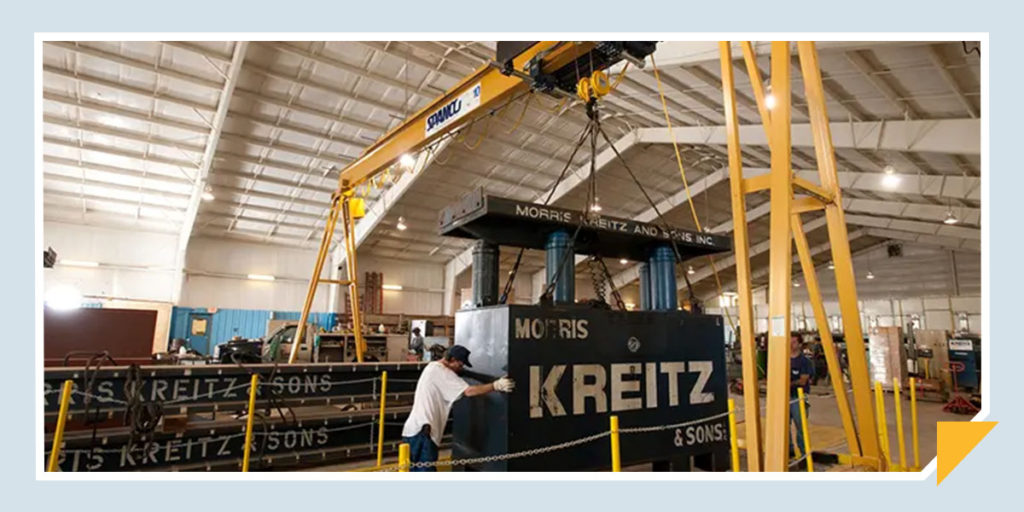
What Is a Fixed-Position Layout?
Nov 27, 2023
A fixed-position layout is an arrangement in which a project’s primary components stay in place while all the other machinery, materials, and workforce come it. Typically, industries use fixed-position layouts because the essential equipment or components for their operations are too heavy, intricate, or delicate to move or because they must complete the project in one specific site.
Industries and facilities using fixed-position layouts include airplane manufacturing, shipbuilding, boiler plants, turbines, construction sites for bridges, dams, and property, and even hospital operating rooms.
No matter the industry, the proper design is vital to operations management and production processes. Explore what a fixed-position layout is, which industries rely on it, and its advantages.
Leading Features of a Fixed-Position Layout
Projects requiring a fixed-position manufacturing floor layout usually share similar features, including assembling large parts and needing skilled staff. Operations using these layouts tend not to be directly customer-centric.
Product-Oriented Approach
Projects requiring a fixed-position layout are almost always product-centric. Companies with product-centric philosophies focus on designing and building the best product possible. While user needs and demand are factors, they are not the primary concern in product-centric projects. Instead, the emphasis is on innovation, developing new products, and delivering valuable items.
The characteristics and benefits of the product-centric approach hold true in industries that use the fixed-position layout. Facilities building large modes of transportation and manufacturing plants are not directly customer-facing and keep their focus on innovations that deliver premium products or services.
Immobile Central Component
The defining feature of a fixed-position layout is that most operations occur in a single location — the product doesn’t move. Instead, the workforce, machinery, and resources all come to the project. The immovable central component significantly impacts product logistics — and is one of the most crucial considerations for managing operations and processes.
Operations managers must work around various factors in an environment with a fixed-position layout. Some crucial variables include space limitations, the materials and resources needed at different operational stages, and worker safety.
Advantages and Disadvantages of a Fixed-Position Layout
Managers and operations specialists do not usually choose a fixed-position layout — most of the time, projects that include immovable components naturally lend themselves to this arrangement. Still, knowing the pros and cons helps managers adapt operations and optimize processes where possible.
Benefits
Some of the most significant advantages of plants with fixed-position layouts are:
- Lower costs — products move rarely or not at all.
- Projects are simpler to customize — for example, building a house to the client’s desired specifications.
- Product damage from shipping and transportation is less likely.
Downsides
There are also some disadvantages to this arrangement, including:
- Frequent equipment use comes with high costs of moving equipment around the facility.
- There is additional demand for skilled workers.
- Space limitations
- More chance of longer completion times and project delays
Examples of Industries That Use Fixed-Position Layouts
It’s simple to envision manufacturing and construction sectors needing a fixed-position plant layout design — especially when you consider shipbuilding or aircraft assembly. However, other industries using this arrangement may come as a surprise.
The fixed-position layout is standard for any job you do on the spot, like client-facing, on-site services such as housecleaning, pest control, and landscaping. Other industries or projects that require a fixed-position layout include:
- Shipbuilding
- Aircraft manufacturing
- Nuclear power plants
- Automated car washes
- Drilling sites
- Farming/agriculture
- Building/construction
Comparisons With Other Layout Types
Various jobs have different layouts depending on the industry or project-specific needs. There are also process layouts, product layouts, cellular layouts, and hybrids of these arrangements. Apart from designs that suit more industrial sectors, there are also layouts for warehouses, offices, and retail spaces.
Fixed-Position vs. Process-Oriented Layout
Process or functional layouts group staff and equipment by varying tasks, and the workflow revolves around the production process or a logical sequence of events. Car and appliance manufacturing facilities, furniture manufacturers, hospitals, and clinics rely on the process-oriented layout for a seamless workflow.
The benefits of process layouts include handling an assortment of processing requirements and a productive workforce as staff engage in various tasks to keep operations moving.
Factors to Consider When Implementing a Fixed-Position Layout
During the initial stages of a project with a fixed-position design, location is the primary consideration. Once complete, the project setup is essentially permanent, so its location is crucial. Factors include:
- Environmental regulations or zoning restrictions
- Quality of life for residents close to the warehouse or plant
- The potential to expand as the project or business grows
- The location’s proximity to resources, suppliers, customers, and skilled workers
Also, remember that limited space at the project site often means workers must assemble product parts elsewhere. You will then need to transport those parts to the fixed location, and may also need space to put the components together.
It is vital to design the workflow for smooth operations. Projects using a fixed-position layout usually involve massive machines like cranes for material handling, so the facility must have the space to house and operate this heavy equipment.
Trusted Material Handling Systems From Spanco
Optimizing the fixed-position layout is essential in various industries. One of the most effective ways to streamline operations is to have quality material handling equipment suited to the job.
At Spanco, Inc., we understand your job site must be maximally efficient. With over four decades of experience and know-how, you can rely on us for material handling solutions to manage operations around your facilities and increase productivity. We have an extensive selection of premium cranes and components to suit your industry needs. Contact us today to learn more about our cranes, fall protection systems, and other offerings that will benefit your facility, or browse our digital showroom now!
Categories
Share this post
Contact us
Looking for the perfect fall protection equipment? Let us help!